Ithink we all remember our first time with fondness. We look back at that first awkward kiss or that first game that turned us into a fan, and it brings a nostalgic smile to our faces. These are the moments that stick with us—milestones that shape who we are and remind us how thrilling it is to experience something new.
The same holds true for travel. My first tentative steps out of the relative comfort of Australian life took place in the chill November winds that whipped around Incheon International Airport. That sudden gust of cold air signaled the start of a new chapter, one filled with unfamiliar places, people, and adventures that would soon feel like second nature. It was both exhilarating and terrifying, knowing that nothing ahead was predictable.
Thus began my two-year love affair with the peninsula country that likes to call itself the land of the morning calm. But don’t be fooled by that serene nickname—South Korea is a place full of energy, contrasts, and surprises. From tranquil temples nestled in the mountains to neon-lit streets that come alive at night, Korea offers a little bit of everything.
8 Reasons To Love Korea
Too few people include South Korea on their travel itineraries, but I hope reading through my reasons for loving the country will maybe get you to rethink your travel plans and give the often-forgotten Asian country a chance. Korea is more than just K-pop and kimchi; it’s a place where the past and present collide, where mountains meet megacities, and where adventure awaits at every turn.
There are a lot of reasons why Korea will always hold a special place in my heart, but below you’ll find the eight that stand out above all others. Each one reflects a unique piece of the mosaic that makes South Korea so captivating.
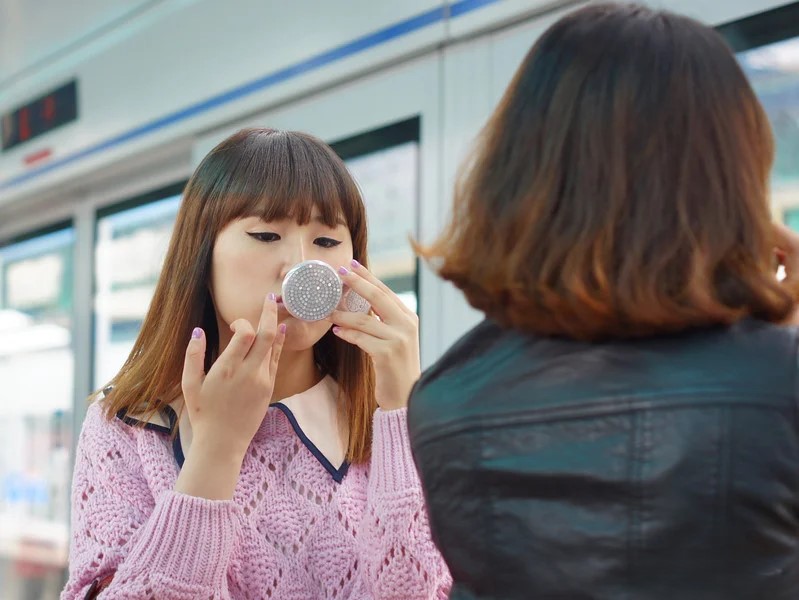
#8 – Cheap and Efficient Transport: Buses, Trains, Subways, and Taxis
Getting around South Korea is criminally easy. The country’s fantastic bus network means you can get virtually anywhere in the entire country for under $30. Whether you’re heading to remote villages or bustling cities, the buses are affordable, clean, and reliable. Shorter trips can come in at under $5! City buses, while occasionally crowded, aren’t likely to set you back more than the equivalent of $2, making public transport accessible even for those on a tight budget.
Beyond affordability, the bus system is easy to navigate—even for non-Korean speakers. Most buses display stops in English, and helpful drivers will sometimes let you know when to get off, especially if you ask politely. They run frequently, meaning you rarely have to wait long, even in rural areas. It’s this efficiency that makes bus travel such a convenient option for both locals and tourists alike.
While buses are cheap and plentiful, they aren’t the only way of getting around. The train network, including the super-fast KTX, also provides plenty of destinations for affordable rates. It’s possible to get from Busan in the southeast to Seoul in the north in less than three hours and for less than $50. Not bad at all, considering the KTX cruises at speeds of up to 300 km/h (186 mph). Sitting on the train, watching the changing landscapes whizz by, is an experience in itself—one that gives you a glimpse of both rural Korea and modern cityscapes.
Larger cities also boast subway networks of their own. Those in Seoul and Busan are particularly good, and tickets rarely creep over the $5 mark. The subways are immaculate and efficient, and the locals take pride in keeping them that way. You’ll often see passengers quietly reading, napping, or scrolling through their phones, enjoying the peaceful ride without the disruptions you might encounter in other major cities.
A string of international and domestic airports dot the country as a result of Korea’s hosting of the 2002 World Cup, and taxis (while erratically driven) can get you around the city at very affordable rates as well. At least compared to cabs in the western world, where the cost of a short ride can be astronomical. And the best part? There’s usually no awkward small-talk involved—just hop in, state your destination, and enjoy the ride.
Transportation Options in Korea
- Affordable bus travel: Reach any part of the country for under $30.
- High-speed KTX trains: Travel from Seoul to Busan in just under three hours.
- Convenient subways: Explore major cities quickly and affordably.
Tip: Get yourself a T-money card. It’s a prepaid card that works on buses, trains, and even in convenience stores—making travel seamless.
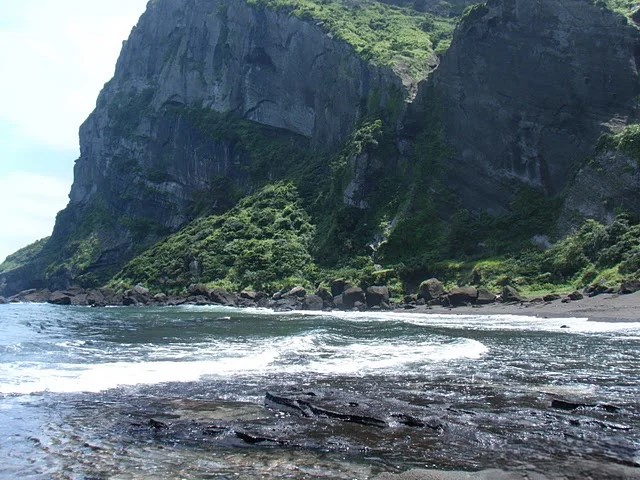
#7 – Jejudo: South Korea’s Island Paradise with Volcanic Peaks and Hidden Gems
While mainland Korea is not without its charms, the semi-tropical island of Jejudo off the southern coast is a drawcard all of its own. It offers a slower pace of life, perfect for those looking to unwind and enjoy some natural beauty away from the fast pace of the mainland.
A volcanic island littered with lava tubes, volcanic craters, and black sand beaches—Jejudo is labeled the ‘Korean Hawaii.’ And while it might not be quite the tropical paradise that Hawaii is, there’s certainly a lot to love about the island. The landscape is diverse: lush forests, towering waterfalls, and scenic coastlines make Jejudo a nature lover’s dream.
Grassy Sangumburi Crater is worth a look, but Seongsan Ilchubong (Sunrise Peak) takes the cake with some absolutely stunning views. A hike to the top at dawn rewards you with a panoramic view of the sea and the surrounding islands as the sun rises over the horizon. The Manjanggul Lava Tubes are pretty impressive as well. Walking through these underground tunnels, formed thousands of years ago by flowing lava, feels like stepping into another world.
In addition to its natural beauty, Jejudo’s status as a tourist spot means it has plenty of restaurants, resorts, and tourist attractions. From the adults-only playground of Love Land to kid-friendly spots like Mini Mini Land and the Gimnyeong Hedge Maze, there’s more than enough to keep you occupied. You’ll also find plenty of fresh seafood restaurants along the coast, serving dishes like abalone porridge and grilled mackerel—Jeju specialties you won’t want to miss.
Jejudo is accessible by plane (fast, but boring) or on the more entertaining ferry. Take the leisurely route and enjoy the atmosphere on the crowded ferries that boast karaoke, restaurants, gaming rooms, saunas, and live performances. It’s an experience in itself and offers a chance to meet locals who are often eager to share stories or a meal.
Why Jeju?
- Seongsan Ilchulbong: Watch the sunrise from a volcanic peak.
- Manjanggul Lava Tubes: Explore underground wonders formed by ancient lava flows.
- Love Land & Mini Mini Land: Attractions for adults and kids alike.
Tip: Don’t leave without trying Jeju’s famous black pork—it’s grilled to perfection and a must-try for foodies.
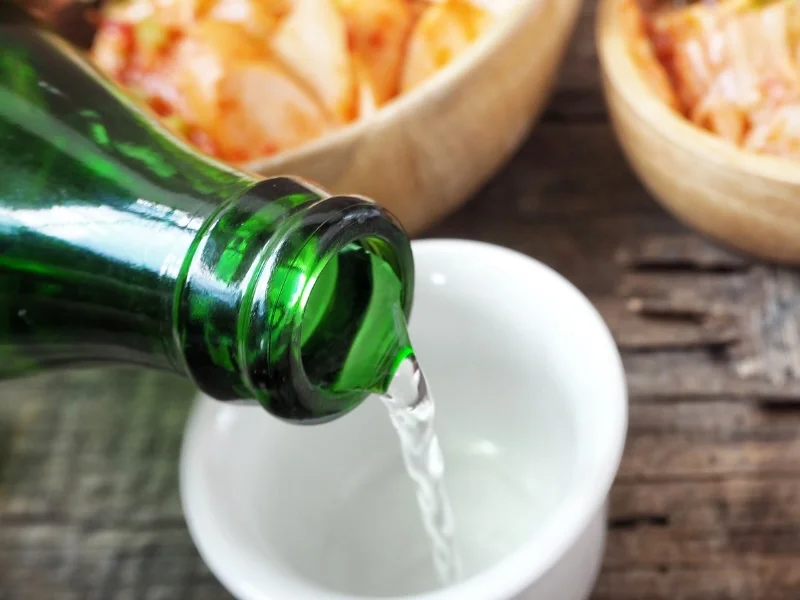
#6 – Korea’s Drinking Culture: Affordable Alcohol and Endless Nightlife Adventures
This may not appeal to every traveler, but Korea is truly a land where you can indulge your inner alcoholic. The drinking culture is vibrant and welcoming, and alcohol is incredibly cheap. A bottle of soju, the country’s national spirit, often costs less than $2—cheaper than bottled water in many places. Soju is a distilled spirit similar to vodka but with a smoother taste, making it easy to drink (sometimes too easy!).
While Korean beer isn’t much to write home about, there are a number of imports available to complement the local selection that includes soju, makgeolli (a sweet rice wine), and plum wine. Each drink has its own place in Korea’s drinking culture—soju for casual gatherings, makgeolli for picnics or hikes, and plum wine for special occasions.
The nightlife is king in Korea. Rare are the bars with curfews, and they’re of a variety that should cover all bases. Seedy soju bars, crowded foreigner-friendly establishments, smoky clubs, and full-service noraebang (karaoke rooms) are all part of the nightlife landscape. Even the convenience stores stock and sell a good selection of booze. I spent many a summer afternoon camped out front of a 7-11 sipping suds.
There’s no open bottle law in Korea either. Rejoice with wine in the park or beers on the beach. It’s a liberating experience to enjoy a cold drink outdoors without worrying about fines or police intervention. This relaxed attitude toward drinking makes social gatherings feel more organic, whether you’re at a festival, a picnic, or just hanging out by the Han River.
Korean Drinking Culture
- Affordable alcohol: Soju for less than $2.
- Vibrant nightlife: Bars, clubs, and karaoke rooms for every taste.
- No open-container laws: Drink freely in parks or on the beach.
Tip: Be careful with soju—it’s stronger than it seems, and hangovers can be brutal!
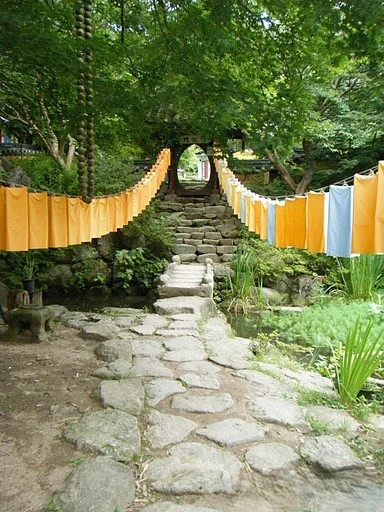
#5 – Rich History Preserved: Temples, Palaces, and Cultural Heritage
While Korean history may not be quite so well known to Westerners as that of neighboring Japan or nearby China, there is still a rich and proud history on the peninsula that stretches back centuries. The country’s history is filled with ancient kingdoms, dynasties, invasions, and revolutions, all of which have shaped the Korea we see today. Everywhere you go, there’s a story waiting to be discovered, whether in ancient temples, historical landmarks, or hidden villages.
While a lot of the ancient temples were destroyed or defaced during the Korean War, you’re still able to visit a good number of them. Daewonsa Temple near Gwangju is known for its peaceful mountain setting, where visitors can take part in temple stays—immersing themselves in monastic life with meditation and traditional meals. Another highlight is the seaside Yonggungsa Temple in Busan, perched dramatically on a cliff overlooking the ocean. Listening to the waves crash below while exploring the temple grounds makes it an experience unlike any other.
Seoul’s Insadong area gives a tourist-friendly cultural experience for those wishing to do a bit of shopping, and Gyeongju (Korea’s former capital) is steeped in history for those wanting to see Korea as it was prior to its post-Korean War boom. Gyeongju is often called an “open-air museum” because it’s filled with temples, tombs, and pagodas that date back over a thousand years. Exploring Jeju Island is a favorite weekend getaway, and Gyeongju is the perfect destination for those who want a deeper dive into Korea’s past.
No matter where you are though, you’re likely to find a temple or historical site worth checking out. It’s inevitable in a country as old as South Korea. Many of these sites offer a glimpse into Korea’s Confucian and Buddhist roots, which still influence modern-day customs. You may even spot locals burning incense or leaving offerings—a reminder that the past is still very much alive in Korea.
Top Korean Temples
- Daewonsa Temple: Find tranquility among the mountains near Gwangju.
- Yonggungsa Temple: Experience coastal serenity at Busan’s seaside temple.
- Gyeongju: Discover Korea’s ancient history at the former capital.
Tip: Visit Insadong for a blend of traditional culture and modern shopping—it’s perfect for souvenirs and trying street food.
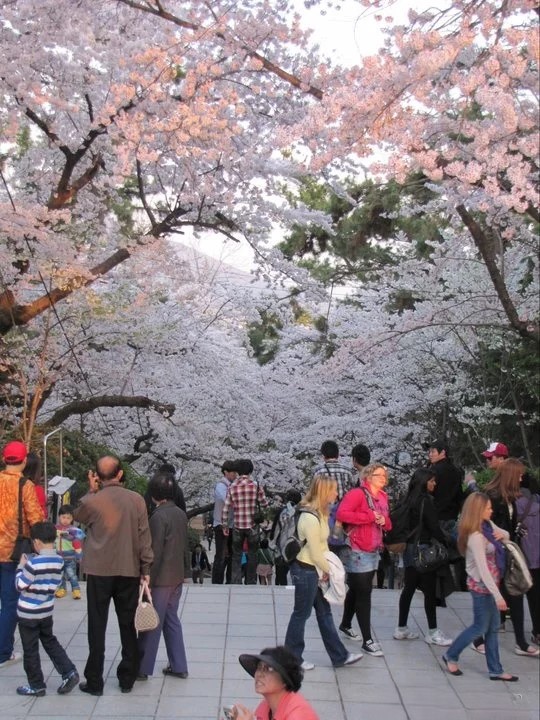
#4 – Festivals Year-Round: Celebrations for Every Season and Taste
Korea is a country that loves a festival, and they’ve got them for just about everything. No matter the time of year, you’ll find celebrations that showcase the country’s vibrant culture, ancient traditions, and modern lifestyle. Festivals are woven into the fabric of Korean life, bringing together locals and tourists to share in the fun.
One of the most famous is the Boryeong Mud Festival, which takes place every summer on the western coast. Originally started as a way to promote the area’s mud-based cosmetics, it has grown into a massive event, attracting visitors from around the world. Mud wrestling, obstacle courses, and slip-and-slide runs create a lively, chaotic atmosphere. It’s not just about getting dirty—it’s about letting loose and enjoying music, food, and fun by the sea.
In the spring, the Jinhae Cherry Blossom Festival transforms streets and parks into a dreamy landscape. People stroll beneath blooming trees, capturing photographs and enjoying picnics with friends. The falling petals create a soft, magical setting, perfect for couples and photographers alike.
Food lovers will appreciate the Gwangju Kimchi Festival, where visitors can learn how to make Korea’s signature dish while sampling regional variations of the beloved fermented cabbage. For something truly unique, the Jinju Lantern Festival lights up the night sky with hundreds of illuminated lanterns drifting along the river, creating a stunning display of light and color.
Top Korean Festivals
- Boryeong Mud Festival: Get messy with mud games and live music by the beach.
- Jinhae Cherry Blossom Festival: Enjoy springtime under a canopy of pink blossoms.
- Jinju Lantern Festival: Marvel at floating lanterns illuminating the night sky.
Tip: If you’re visiting in the summer, bring sunscreen and a change of clothes to the mud festival—you’ll need both!
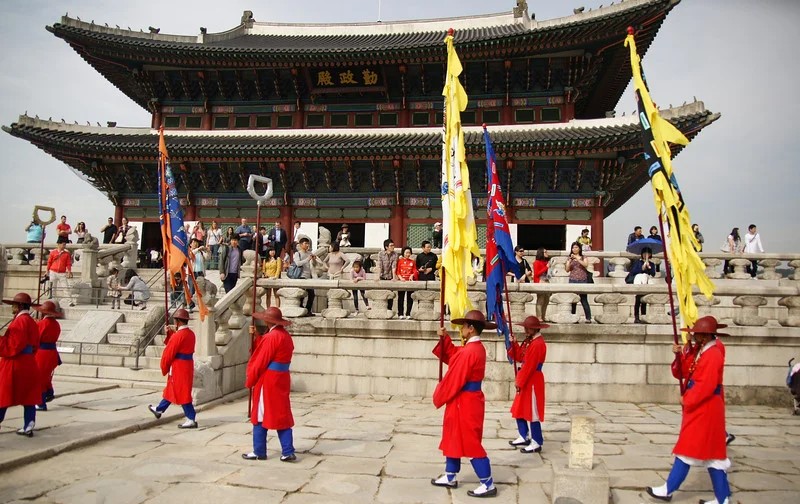
#3 – Hiking Adventures: Mountains, Trails, and Scenic Views
Korea’s natural landscape is perfect for outdoor enthusiasts, with a variety of trails that suit both beginners and experienced hikers. The country’s mountainous terrain provides an opportunity to escape the busy city life and connect with nature. Even for someone like me—who doesn’t consider themselves much of an outdoorsman—Korea’s hiking culture made the experience enjoyable.
A naturally mountainous country, most of Korea’s peaks are accessible to the public with well-marked trails. Families, groups of friends, and even solo hikers venture out on sunny weekends, often sporting colorful hiking gear. It’s not unusual to see elderly hikers equipped with trekking poles and fully loaded backpacks, cheerfully making their way up the trails.
One of the most popular hiking destinations is Seoraksan National Park, home to towering peaks, waterfalls, and ancient temples hidden among the trees. Seoraksan is especially stunning in the fall when the leaves turn vibrant shades of red, orange, and yellow. Closer to the capital, Bukhansan National Park offers a range of trails just a short subway ride from central Seoul. It’s a favorite spot for locals looking to escape the city without having to travel far.
What makes hiking in Korea so enjoyable is the sense of community on the trails. Hikers are friendly and often share snacks—like fruit, rice cakes, or even a bit of makgeolli—with strangers they meet along the way. It’s not just about reaching the summit; it’s about enjoying the journey with others.
Best Hikes In Korea
- Seoraksan National Park: Hike through scenic mountains and waterfalls.
- Bukhansan National Park: Escape the city with trails close to Seoul.
- Hiking culture: Friendly locals and shared snacks make the experience memorable.
Tip: Pack a light meal and some water. It’s common for hikers to stop mid-trail and enjoy a picnic with friends or fellow hikers.
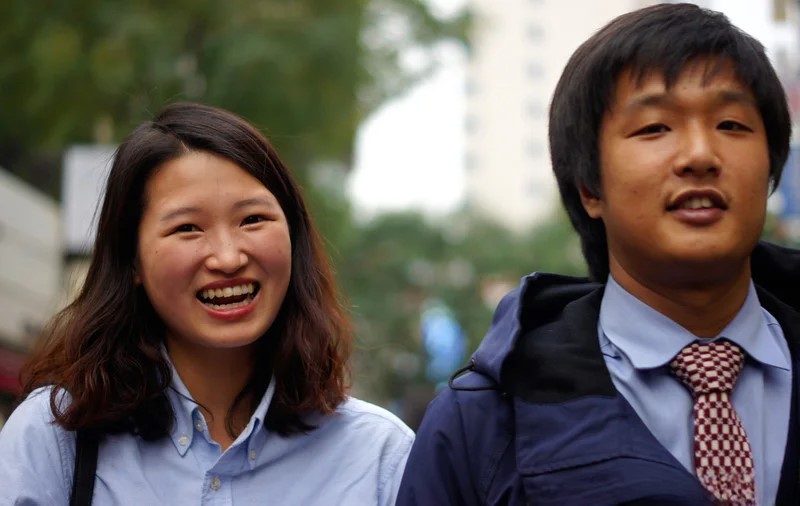
#2 – Koreans: Friendly Locals and a Unique Blend of Old and New Cultures
You can’t make a list of reasons to love Korea without including its people. The locals play a huge role in shaping the experience of every traveler. While cultural differences can sometimes create challenges, I found Koreans to be polite, warm, and enthusiastic about sharing their country’s traditions and culture.
Korean culture is a fascinating blend of old traditions and modern influences. It’s not uncommon to see a historic temple sitting in the shadow of a gleaming skyscraper, or to spot someone in traditional hanbok strolling down a street filled with coffee shops and convenience stores. This juxtaposition of old and new is part of what makes Korea so unique.
Although there can be occasional moments of misunderstanding—especially with language barriers—most locals are friendly and eager to help. Whether it’s a stranger offering directions or a shop owner sharing recommendations, there’s a genuine sense of hospitality. This extends across all generations, from curious children practicing their English to elderly neighbors eager to share stories.
There’s also a strong community spirit in Korea. You’ll see it in the shared meals at markets, the camaraderie on hiking trails, and the way locals come together during festivals and celebrations. Koreans take pride in their country and enjoy introducing travelers to their culture.
Korean Culture
- Friendly locals: Eager to help and share their culture.
- Old meets new: Tradition and modernity coexist beautifully.
- Community spirit: A sense of togetherness in everyday life.
Tip: Learning a few basic Korean phrases, like hello (annyeonghaseyo) or thank you (kamsahamnida), goes a long way in building connections with locals.
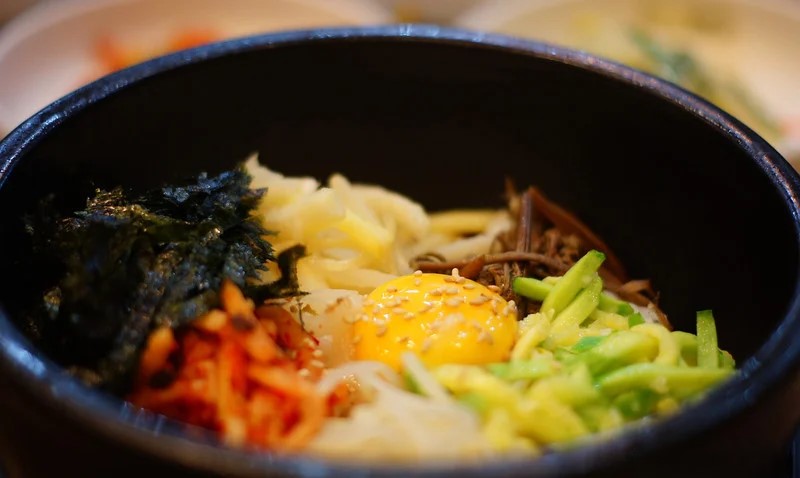
#1 – Korean Cuisine: Bold Flavors, Street Food, and Cozy Cafes
If there’s one facet of life in Korea that I miss on a daily basis, it’s the food. Korean cuisine offers a perfect mix of flavors—spicy, savory, sweet, and tangy—all packed into dishes that are as exciting to eat as they are satisfying. Food plays a central role in Korean culture, and every meal feels like an event, whether you’re grabbing street food from a market stall or enjoying a traditional barbecue with friends.
Korean food doesn’t look like much at first. There’s a heavy reliance on rice and meat in the diet, but there’s enough variety to ensure you’re not bored too quickly. Traditional dishes such as bulgogi (marinated beef), galbi (grilled ribs), and bibimbap (rice mixed with vegetables and egg) are relatively tame introductions to Korean cuisine. But once you’ve tried the basics, it’s time to dive deeper into the culinary landscape.
Me? I miss spicy ddeok galbi (chicken with chewy rice cakes), savory pajeon (seafood pancakes), and the street treats such as twigim (deep-fried snacks), odeng (processed fish on sticks), and toasties (an import from America with a local twist). Walking through markets like Gwangjang in Seoul, you’ll find an endless variety of snacks, from tteokbokki to hotteok (sweet pancakes filled with syrup).
Korea also boasts a fascination with coffee shops and bakeries. There’s no shortage of Starbucks clones to pick from, but I’m a fan of Tom & Toms with its sweet or savory stuffed pretzels. The café culture in Korea is thriving, offering a cozy refuge from the hustle and bustle of city life.
Korean Food To Try
- Bibimbap and bulgogi: Familiar, yet delicious staples.
- Street food: Explore markets for a variety of affordable snacks.
- Café culture: Relax with artisanal coffee and sweet treats.
Tip: Don’t be afraid to try unfamiliar foods—some of the best dishes are found off the beaten path.
Maybe I’m a little bit biased because I called Korea home for two years, but I see a lot of reasons to love the place. There’s a great blend of the old traditions, temples, and cultural quirks alongside the fact that the country is one of the fastest developing technological powers in the world.
Have you been to Korea? What did you love about the place?
